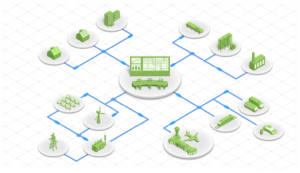Today’s economies extremely depend on the uninterrupted supply of electrical energy. In addition, the quality of supply must be within defined, comparatively small limits to assure smooth operation.
This dependency has led – in most cases – to the installation of protection systems with selective characteristics which will switch a fault off as fast as possible with the least effect on the healthy network. The protection, together with other automation systems, forms complex structures that require specialists to extend and maintain.
The effects of faults on the networks have been minimized in general. However, even the installation of first rate protection and state-of-the-art control centers cannot prevent situations, in which the fault is not selectively isolated and subsequently a major outage occurs.
It is the task of the operators in the control room to analyze the situation based on the available data, isolate the fault and restore the supply to the customers.
To do this as fast as possible and within the given rules, the operators need to be well experienced. This experience, however, is hard to find today. Many operators have never experienced a really grave disturbance in their network.

To achieve a certain level of experience, "means of training" must be provided which accelerates experience buildup. A deep simulation training simulator which can play the role of actual “Digital Twin” of the grid is essential.
The Grid Digital Twin (GDT) shall cover:
- Transmission, Subtransmission and Distribution networks.
- DER in forms of renewables and other forms of distributed generations
- Power plants from solar and wind farms to combined cycle power plants
- Protections
- Loads and consumers
- Automation systems
- Communication systems
- Control system itself
As an example, TSOs and DSOs now need to implement an automated power restoration functionality (black start scenarios) and need to check them in the GDT. The GDT can take DER role at both distribution and transmission side of the grid.
The digital twin of the grid shall simulate all voltage levels as a whole, so a holistic view of the entire grid is realized and scenarios can be integrated into a single system.
It will be the role of GDT to cover
- Standard operations in the undisturbed network and thus qualifying the operators for their "normal business"
- Exceptional situations which may occur in the network
- Fault situations and how to cope with these.
